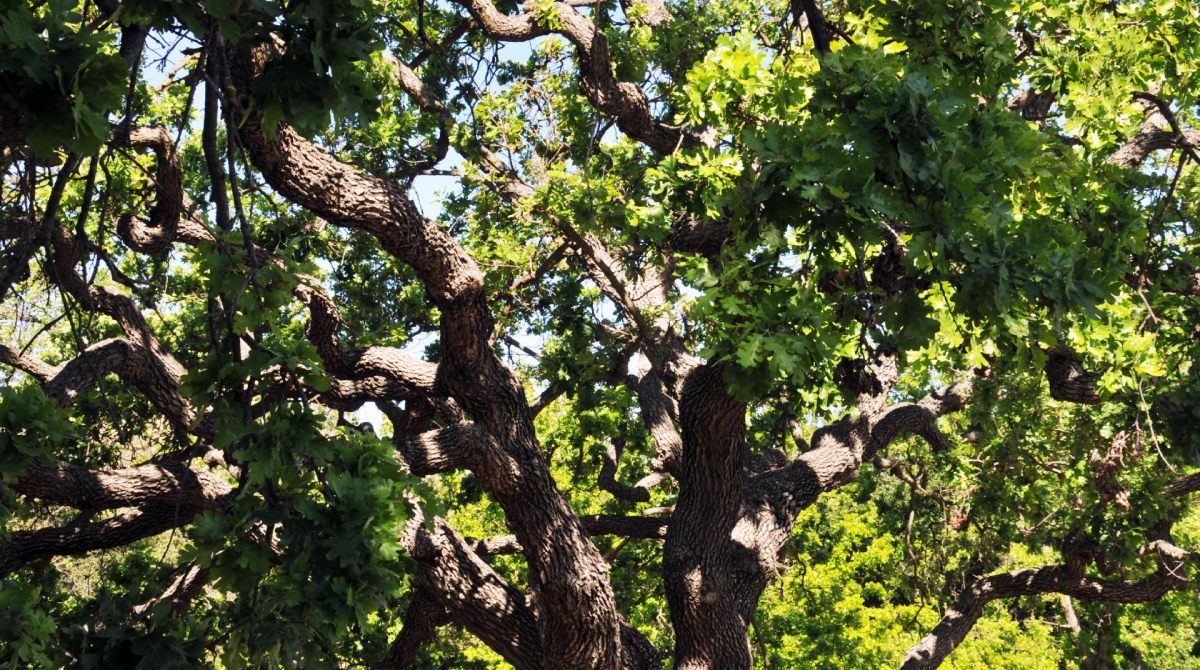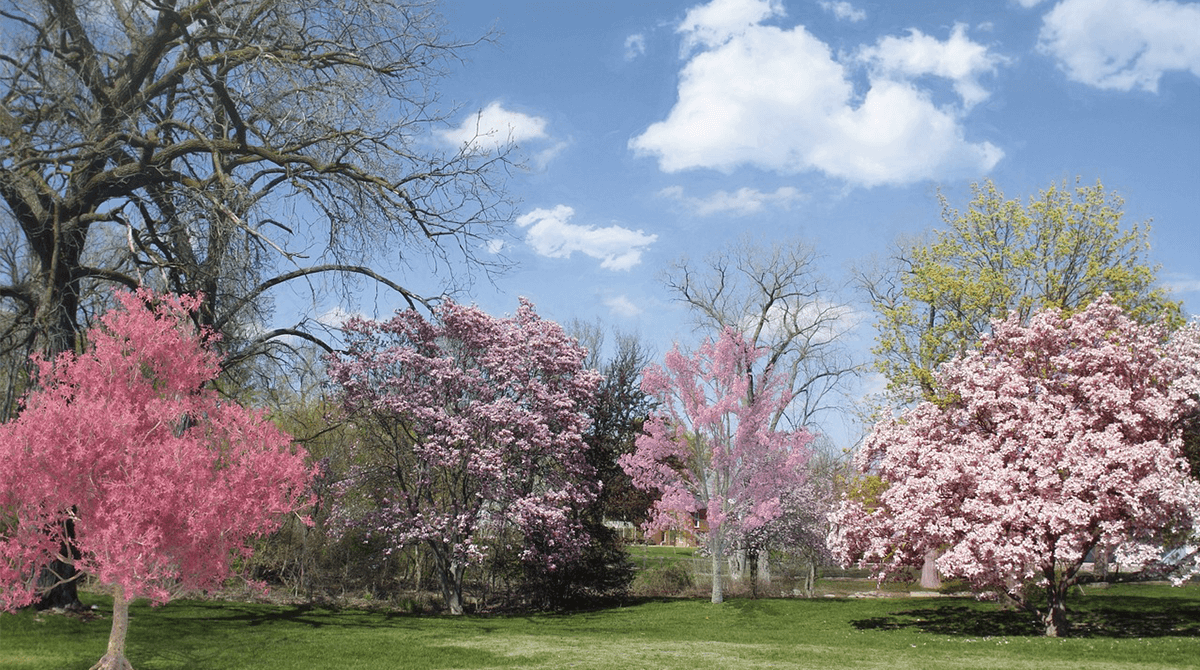
Date January 30, 2023
Category
With over 50 species growing in Texas, oak trees are one of Dallas/Fort Worth’s most beloved landscape staples. Its massive crown, towering branches, and adaptability make them one of the hardiest and longest-living trees in the world. While they don’t call it the mighty oak tree for nothing, they’re still prone to a life-threatening condition known as oak wilt. This blog post will explain everything you need to know about protecting North Texas oak trees from oak wilt this season and beyond.
TreeNewal is a full-service sustainable tree care company offering residential and commercial tree services in Dallas, Argyle, Denton, Fort Worth, Flower Mound, Southlake, and Westlake. Contact our Dallas tree care specialists at (817) 592-6846 and enjoy tailored tree care advice and the best tree health services in North Texas!
What is Oak Wilt?
Oak wilt is a fungal disease that affects the vascular system of North Texas oak trees. As this fungus grows through the infected tree’s water-conducting system, it cuts off its water and nutrient supply. Without these vital resources, Dallas oak trees wilt and die. While all oak trees are susceptible to oak wilt disease, the red oak group (red, black, and pin oaks) and live oaks are at the highest risk of death, while the white oak group is less affected.
How Does Wilt Spread in North Texas?
Oak wilt fungus spreads from tree to tree in two ways: underground through roots and above ground by insects.
Most new tree infections occur when the fungus moves from an infected tree to a nearby healthy tree through connected root systems. The roots of oak trees commonly graft to the roots of other trees in the same group, forming a continuous underground network. When one tree becomes infected and dies, the fungus spreads through its connected root systems, killing more trees and creating an infection center.
The other way oak wilt spreads is through small sap beetles. These hungry tree pests pick up fungal spores from the infected tree and carry them to nearby trees that have sustained external injuries. Storm damage, tree trimming cuts, and other injuries are the common causes of these vulnerable wounds. With such direct access to the oak tree’s vascular system, it can take very little time before infection can take root in your oak tree.
Once oak wilt spores spread inside the fresh wound, the tree attempts to plug up cells to fight off the disease, leading to the telltale wilt. Infected red oak trees can wilt and die within several weeks, while some oak tree species, like live oaks, can tolerate infections for one or more years.
Oak Wilt Symptoms
Once North Texas oak trees are affected by oak wilt fungal disease, it causes wilting, early leaf drop, discolored leaves, and sometimes vascular streaking in the sapwood. Wilting can progress rapidly down through the crown. Trees in the red oak group can experience complete defoliation and die within three to six weeks after the initial symptoms occur.
Some oak trees, including the live oak species, develop brown veins in the leaves, while the tissue remains green. Early oak wilt symptoms are wilting, bronzing, and shedding of leaves at the ends of tree branches. Bronzing begins on infected leaves’ tips and outer margins and spreads to the midribs and base. Leaves can curl around the midrib, but many leaves will fall before becoming completely discolored.
While oak wilt infection in the white oak group is less severe, signs include slow wilt of individual branches and leaves turning tan to brown before dropping from the tree. Discolored leaves will begin to fall, and discolored streaking in the infected sapwood may occur; however, this is often less noticeable than other vascular diseases.
Some of these color shifts and symptoms can appear subtle and mimic other North Texas tree infections, so this disease must be diagnosed swiftly and correctly. If your trees show any of these signs, call (817) 592-6846 for a diagnosis by a Dallas tree doctor ASAP! Doing so as early as possible will give you the most accurate identification and treatment plan before it’s too late.
How to Protect Your Tree from Oak Wilt this Spring
Help protect your tree from oak wilt this season by avoiding pruning at-risk trees during their growing season, which is typically between February and July. The peak of sap beetle populations and fungal mat formation coincides with this season, and any open injuries can immediately leave oak trees vulnerable. Ideally, avoid pruning North Texas oak trees from February to November, but if that’s not possible, keep your oak trees protected by avoiding pruning from March to mid-July.
While even the most vigilant protection can’t always prevent accidents, it’s vital that if your oak tree is injured during these times that they are given swift and effective protection by a Dallas tree care specialist. Doing so is the best way to protect your oak tree during these vulnerable months.
Best Tree Treatment for Oak Wilt
If a TreeNewal ISA Certified Arborist has officially diagnosed your tree with oak wilt, there are admittedly few options for treatment. However, a certified tree doctor can apply treatments to nearby trees to help control the spread and give your trees the best chance of survival.
Trees infected with or have died from oak wilt should be removed and properly treated to prevent the development of spore mats and spreading to nearby trees.
A DFW tree care specialist can also inject systemic fungicides into the tree’s trunk to stop the fungal spores in their tracks and prevent them from making their way into the underground root graft matrix.
ISA Certified Arborist Tree Services
Oak wilt is by far the biggest threat to our magnificent North Texas oak trees. When given the proper care and maintenance, oak trees in urban environments can live up to 300 years. Proactive tree care is crucial to ensure your landscape is safe this season. Luckily, several ways to safeguard your tree’s health include:
- Scheduling your annual tree trimming and pruning services.
- Treating any insects or diseases before the growing season.
- Giving them tree health services like nutrition and fertilization.
With the help of TreeNewal’s ISA Certified Arborists, you can ensure your trees stay healthy and strong this year and beyond. Call (817) 592-6846 to learn how we can improve your landscape today!








